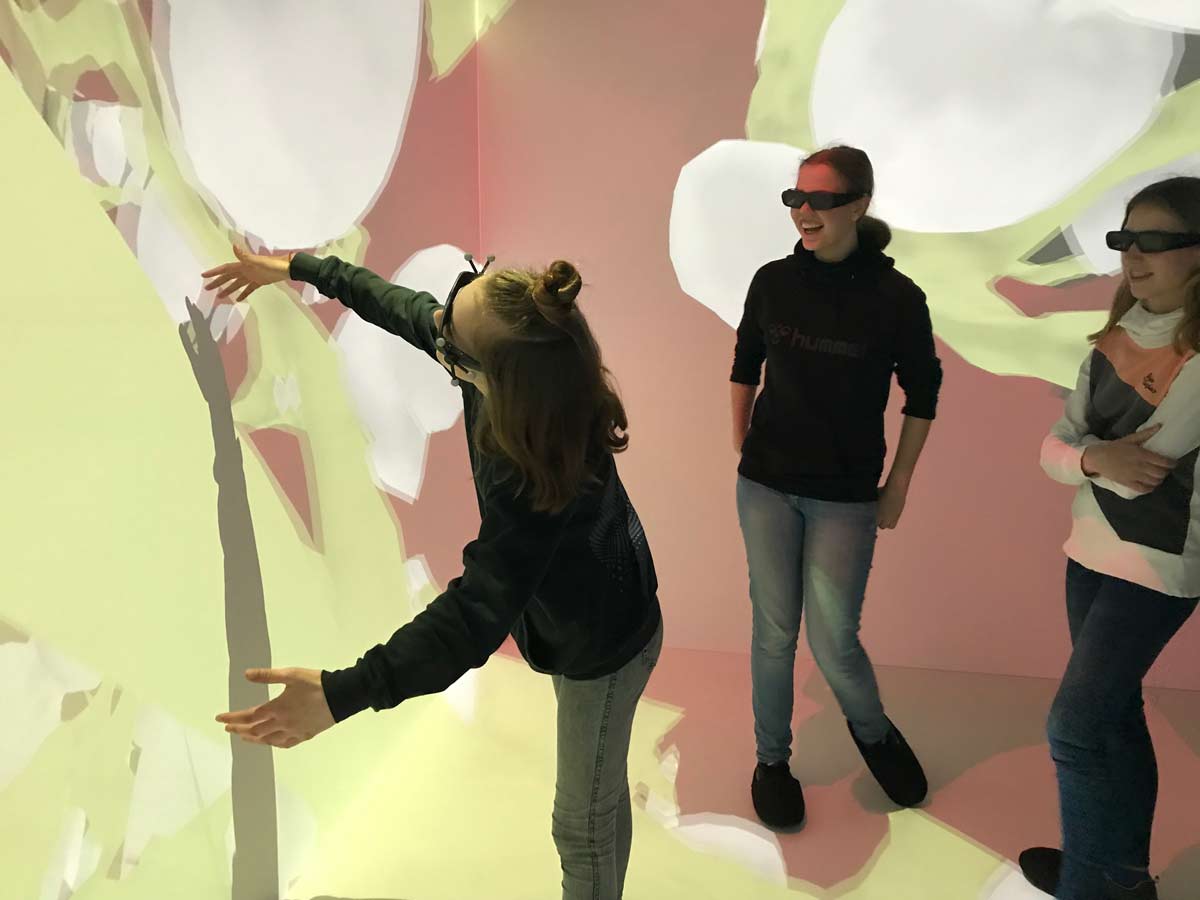At the CSBD computational science and physics meet biology. Particularly in the first two fields, females are still underrepresented. To change that we opened our doors again for the nationwide Girls’ Day on 28 March.
A group of 24 school girls visited the Center as part of the Girls’ Day program organized by the Faculty of Computer Science at TU Dresden. At first, the young ladies were introduced to systems biology and the interdisciplinary research conducted in the group of Ivo Sbalzarini. Then, the girls dipped straight into the practical aspects of computational biology. In the 3D virtual reality CAVE, they literally walked through a mouse liver and witnessed the development of a fruit fly embryo and zebrafish eye. Ulrik Günther and Aryaman Gupta, two PhD students in the Sbalzarini group, were facing countless questions and open mouths.
Afterwards, the group got creative: the girls were turning genome sequences into music. With the help of Anastasia Solomatina and Tina Subic Ramaswamy, two doctoral students from the Sbalzarini team, the girls applied special algorithms to DNA sequences of proteins and listened to their compositions afterwards.
The feedback was unanimously positive: “I was very happy about the vivid vibes and the curious questions from the group! Hope to see you later at the CSBD!”, Ulrik complimented the girls.
At the same time, the neighboring Max Planck Institute of Molecular Cell Biology and Genetics (MPI-CBG) also hosted a group of school girls: 18 girls had the chance to hear about career paths in science from the female staff and could ask questions like: What is it like to be a scientist? Can you do research and have a family? Why did you decide to become a scientist? After the discussion, the girls went on a tour of the building to see zebrafish, worms, and fruit flies.
Girls’ Day is a German-wide campaign, in which a wide range of professions and activities is presented to school girls. Particularly, the girls are encouraged to pursue technical professions and fields, where females are still under-represented, such as in the “STEM” fields (Science, Technology, Engineering and Mathematics).
